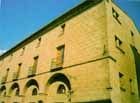A special feature of Javea is based on its historical confrontation with Dénia. Thus, when the War of Succession (1704-1714), Dénia decided in favor of the Habsburgs, and Jávea remained faithful to the Borbón Felipe V, which is why he suffered austracistas attacks. After he won the first monarch of the Bourbon dynasty, the privilege of being able to use the coat of arms the fleur de lys or two Ls crowned as the city of Valencia, symbolizing the fidelity of Javea. From this moment and for more than two decades Jávea had more inhabitants than Dénia.
At the time of the French War (1810-12), Dénia welcomed the Napoleonic garrisons, while Jávea offered resistance. At this time, Antonio Catalá, who gained important fame as leader of a gang of guerrillas who frequently harassed the French troops in the region, stood out.
Wealth derived from the exploitation and trade of passes resulted positively in building large houses, while in the field riu-raus typical that are representative elements of rural architecture emerged.
He finished the piratical harassment began tearing down the walls and emerge the suburbs.
The total demolition of the walls ended in 1.873.
In 1.878 Jávea-Xàbia had a third class customs post, Navy Command and Civil Guard barracks that housed six numbers. The population had 941 buildings and 6452 inhabitants. The agricultural products of local production were mainly raisins, wheat, silk, pulses, fruit trees and vegetables. On the other hand many were dedicated to navigation and fishing.
Policy Restoration was basically cacique. In this regard Jávea stressed the importance and influence of their heads row. The relevance of this political structure lasted until the Second Republic.
January 08 from 2013 - 18: 15








